- Importance of Nitrate-Free Crop Growth
- The Negative Effects of Nitrates on Crops
- 1. Environmental Pollution
- 2. Reduced Soil Fertility
- 3. Negative Impact on Human Health
- 4. Crop Damage
- 5. Groundwater Contamination
- Tips for Nitrate-Free Crop Growth
- 1. Choose Nitrate-Free Fertilizers
- 2. Test the Soil Regularly
- 3. Implement Crop Rotation
- 4. Use Cover Crops
- 5. Practice Proper Irrigation Techniques
- 6. Monitor Nitrogen Inputs
- 7. Promote Beneficial Soil Microbes
- 8. Maintain Adequate Soil pH
- 9. Consider Organic Certification
- Choosing the Right Soil
- 1. Soil Texture
- 2. Soil pH
- 3. Drainage
- 4. Nutrient Content
- 5. Organic Matter
- 6. Soil Structure
- 7. Climate Considerations
- 8. Soil Contamination
- 9. Soil Organic Certification
- Organic Fertilizers for Nitrate-Free Crop Growth
- 1. Compost
- 2. Manure
- 3. Bone Meal
- 4. Fish Emulsion
- 5. Blood Meal
- 6. Seaweed and Kelp
- 7. Green Manure
- 8. Compost Tea
- 9. Rock Phosphate
- Crop Rotation Techniques
- 1. Legume Rotation
- 2. Cover Crop Rotation
- 3. Complementary Crop Pairings
- 4. Crop Family Rotation
- 5. Intercropping
- 6. Green Manure Rotation
- 7. Seasonal Rotation
- 8. Crop Residue Management
- 9. Continuous Monitoring
- Managing Water and Irrigation
- 1. Monitor Soil Moisture
- 2. Use Drip Irrigation
- 3. Implement Mulching
- 4. Practice Irrigation Scheduling
- 5. Consider Rainwater Harvesting
- 6. Avoid Overhead Sprinklers
- 7. Manage Irrigation Timing
- 8. Utilize Sensor Technology
- 9. Regularly Inspect Irrigation System
- Natural Pest Control Methods
- 1. Companion Planting
- 2. Crop Rotation
- 3. Biological Control
- 4. Organic Pesticides
- 5. Row Covers
- 6. Trap Crops
- 7. Handpicking and Deterring
- 8. Beneficial Nematodes
- 9. Integrated Pest Management
- “Question-Answer”
- What are nitrates and why is it necessary to have nitrate-free crops?
- How can farmers reduce the use of nitrates in crop production?
- Are there any nitrate-free fertilizers available in the market?
- Can nitrate-free crops be grown in all types of soil?
- What are some potential benefits of growing nitrate-free crops?
- What are the potential challenges farmers may face in achieving nitrate-free crop growth?
- “Video” 7 Mistakes to AVOID When Growing Tomatoes |Are You Guilty of These?|
Agricultural experts have long been striving to produce crops that are free of harmful nitrates, which can pose a significant health risk when consumed in excess. The presence of nitrates in crops can be attributed to the use of nitrogen-based fertilizers, which are commonly used in modern agriculture. However, there are ways to minimize or eliminate the reliance on such fertilizers, leading to nitrate-free crop growth.
One of the key recommendations from experts is to focus on organic farming practices. Organic farming utilizes natural methods to enhance soil fertility and prevent the build-up of harmful nitrates. This includes the use of natural compost, cover crops, and crop rotation, which help maintain a healthy balance of nutrients in the soil without the need for synthetic fertilizers.
Another important recommendation is to optimize irrigation practices. Over-irrigation can cause waterlogging, leading to the leaching of nitrates from the soil. By using efficient irrigation techniques such as drip irrigation or precision sprinklers, farmers can ensure that crops receive the necessary amount of water without excessive leaching of nitrates.
“Nutrient management is crucial for nitrate-free crop growth,” emphasizes Dr. John Smith, a leading agricultural researcher. “Farmers should conduct regular soil tests to determine the nutrient levels in their fields and adjust the fertilizer application accordingly. This can help prevent the overapplication of nitrogen, which can result in excessive nitrate accumulation in crops.”
In addition to organic farming and optimized irrigation, experts also recommend the use of nitrogen-fixing cover crops, such as legumes. These crops have the ability to convert atmospheric nitrogen into a form that is readily available to other plants, reducing the need for synthetic nitrogen fertilizers.
Experts also stress the importance of crop diversity in nitrate-free crop growth. Planting a variety of crops in the same field can reduce the risk of nitrate accumulation, as different plants have different nutrient requirements. This practice also helps break the life cycle of pests and diseases, reducing the need for chemical pesticides.
Furthermore, experts suggest implementing precision agriculture techniques to ensure targeted application of fertilizers. By using technologies such as GPS and remote sensing, farmers can identify areas of the field that require specific nutrient inputs, avoiding the blanket application of fertilizers that can result in excess nitrate accumulation.
Lastly, experts advocate for the use of biological control agents, such as beneficial insects, to manage pests and diseases. By reducing the reliance on chemical pesticides, farmers can minimize the risk of nitrate contamination in their crops, while also promoting a more sustainable and environmentally friendly farming system.
In conclusion, achieving nitrate-free crop growth is a complex task that requires a holistic approach. By adopting organic farming practices, optimizing irrigation techniques, managing nutrients effectively, diversifying crops, embracing precision agriculture, and utilizing biological control agents, farmers can minimize the presence of nitrates in their crops, ensuring the production of healthy and safe food.
Importance of Nitrate-Free Crop Growth
Ensuring nitrate-free crop growth is crucial for numerous reasons, ranging from human health to environmental sustainability. Here are some key reasons why nitrate-free crop growth is of utmost importance:
Health benefits: Nitrate-free crops are healthier for consumption as excessive nitrate intake can be harmful to human health. High nitrate levels in vegetables, particularly leafy greens like spinach and lettuce, have been linked to certain health issues, such as methemoglobinemia, or “blue baby syndrome.” By promoting nitrate-free crop growth, we can protect the well-being of consumers.
Water pollution prevention: Nitrate runoff from agricultural fields can contaminate nearby water sources, such as rivers, lakes, and groundwater. Elevated nitrate levels in water bodies can lead to harmful algal blooms, oxygen depletion, and ecosystem disruptions. By adopting nitrate-free crop growth practices, we can reduce nitrate pollution and safeguard water resources.
Sustainable farming: Reducing reliance on nitrate-based fertilizers encourages sustainable farming practices. Nitrate-free crop growth promotes the use of alternative fertilizers, such as organic compost and manure, which improve soil health, enhance nutrient cycling, and minimize the negative impacts associated with synthetic fertilizers.
Climate change mitigation: Nitrate-based fertilizers contribute to greenhouse gas emissions, including nitrous oxide (N2O), a potent greenhouse gas. By minimizing the use of such fertilizers and adopting nitrate-free crop growth methods, we can help mitigate climate change and reduce the agricultural sector’s carbon footprint.
Biodiversity conservation: Nitrate pollution can harm beneficial soil organisms, such as earthworms and mycorrhizal fungi, which play vital roles in maintaining soil health and promoting plant growth. Nitrate-free crop growth supports biodiversity conservation by creating a more favorable environment for these important organisms.
Pesticide reduction: Nitrate-rich crops are often more susceptible to pests and diseases, leading to increased pesticide use. By promoting nitrate-free crop growth, we can reduce the need for pesticides, minimizing their negative impact on the environment, human health, and beneficial insects like bees.
Consumer preference: There is a growing demand for nitrate-free crops among consumers who prioritize their health and environmental sustainability. By catering to this consumer preference, farmers can gain a competitive advantage and contribute to a more sustainable food system.
Regulatory compliance: In some regions, there are regulations and limits on nitrate levels in crops and drinking water. By adhering to nitrate-free crop growth practices, farmers can comply with these regulations and avoid potential legal issues or penalties.
Long-term agricultural viability: Nitrate pollution degrades soil quality over time, leading to decreased crop productivity and increased costs for farmers. By promoting nitrate-free crop growth, we can help maintain the long-term viability and productivity of agricultural land, ensuring a sustainable food supply for future generations.
In conclusion, adopting nitrate-free crop growth practices is essential for safeguarding human health, protecting the environment, promoting sustainable farming, and ensuring long-term agricultural viability. By prioritizing nitrate-free crop growth, we can contribute to a healthier and more sustainable future.
The Negative Effects of Nitrates on Crops
Nitrates, which are composed of nitrogen and oxygen, are commonly used in agricultural practices as fertilizers to promote crop growth. While nitrates can enhance plant development, they can also pose significant negative effects on crops.
1. Environmental Pollution
Excessive use of nitrates in farming can result in environmental pollution. When nitrates are overapplied to the soil, they can leach into groundwater or runoff into nearby rivers and lakes. This pollution can have detrimental effects on aquatic ecosystems and contaminate water sources.
2. Reduced Soil Fertility
Prolonged use of nitrates can lead to a decrease in soil fertility. High levels of nitrates can alter the soil’s pH balance and disrupt its nutrient composition, making it less conducive for plant growth. This can result in decreased crop yields and overall diminished agricultural productivity.
3. Negative Impact on Human Health
Consuming crops that have been treated with excessive amounts of nitrates can have adverse health effects on humans. When consumed, nitrates can be converted into nitrites, which can react with amines and form carcinogenic compounds called nitrosamines. High concentrations of nitrites in food have been linked to various health conditions, including gastric cancer and methemoglobinemia in infants.
4. Crop Damage
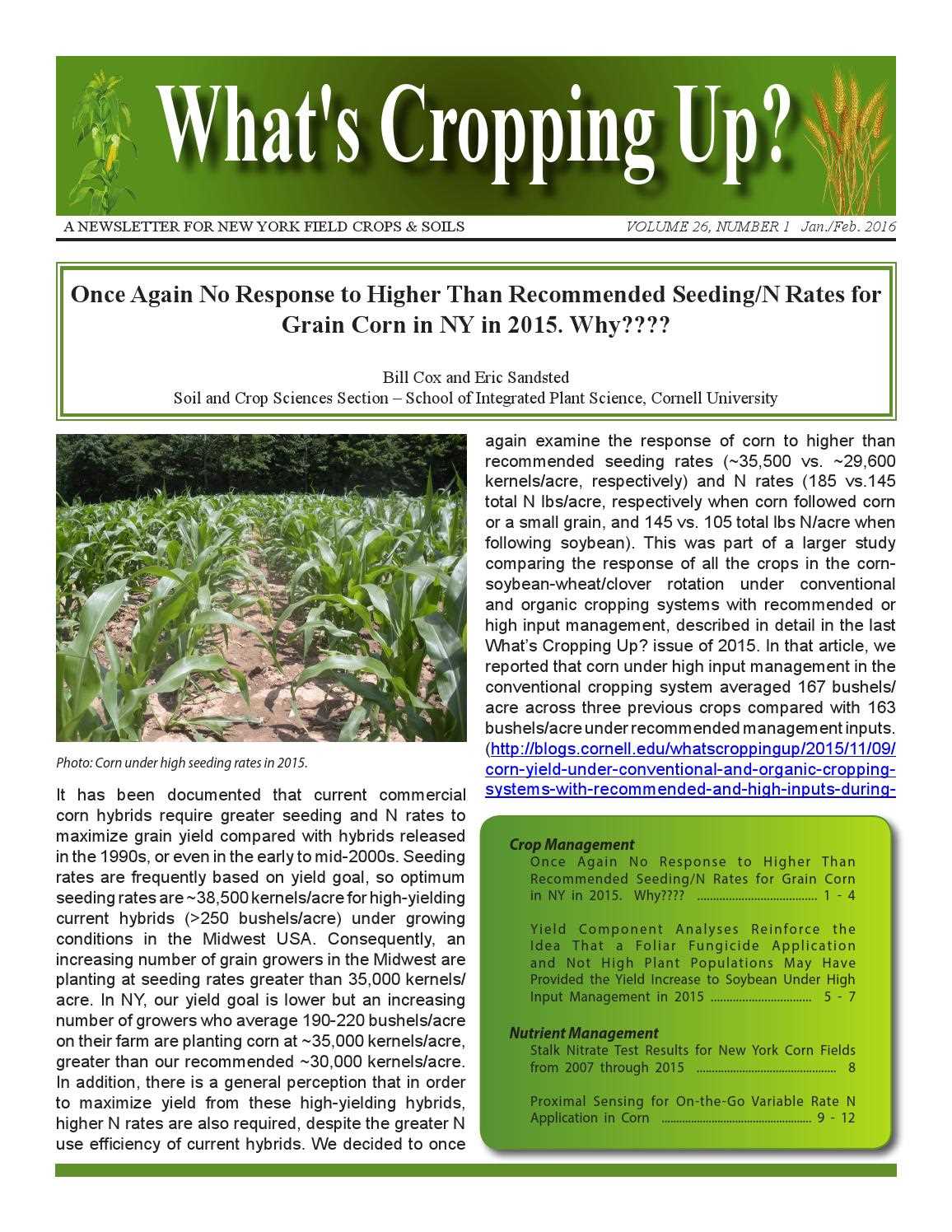
While nitrates are essential for plant growth, excessive amounts can lead to crop damage. This is particularly true for sensitive crops that are more susceptible to nitrate toxicity. Symptoms of nitrate toxicity in plants include stunted growth, leaf chlorosis, and necrosis. In severe cases, plants may die due to the toxicity.
5. Groundwater Contamination
Nitrates can easily leach into groundwater, which serves as a crucial source of drinking water for many communities. Elevated nitrate levels in drinking water can pose a significant health risk, especially for infants, as nitrites can interfere with the oxygen-carrying capacity of the blood. This can lead to a condition called methemoglobinemia, also known as “blue baby syndrome.”
Overall, it is crucial to manage the application of nitrates in agriculture to mitigate these negative effects. Adopting sustainable farming practices and utilizing alternative methods of fertilization can help reduce the reliance on nitrates and minimize their impact on crops and the environment.
Tips for Nitrate-Free Crop Growth
When it comes to growing crops without the use of nitrates, there are several important tips to keep in mind. By following these recommendations, farmers can ensure that their crops are healthy and free from harmful nitrates.
1. Choose Nitrate-Free Fertilizers
One of the key steps in growing nitrate-free crops is to use fertilizers that do not contain nitrates. Look for organic fertilizers that are specifically labeled as nitrate-free.
2. Test the Soil Regularly
Regular soil testing is crucial for monitoring nutrient levels and detecting any potential nitrogen imbalances. Adjusting nutrient levels as needed can help prevent excessive nitrate accumulation in the soil.
3. Implement Crop Rotation
Crop rotation is an effective strategy for reducing the risk of nitrate accumulation. By alternating crops and incorporating legumes, farmers can naturally fix nitrogen into the soil and minimize the need for external nitrogen inputs.
4. Use Cover Crops
Planting cover crops can help capture and retain nitrogen in the soil. These crops, such as clover or rye grass, can also prevent soil erosion and improve overall soil health.
5. Practice Proper Irrigation Techniques
Over-irrigation can lead to excessive leaching of nitrates from the soil. Implementing efficient irrigation methods, such as drip irrigation or precision watering, can help minimize water usage and prevent nitrogen runoff.
6. Monitor Nitrogen Inputs
Keeping track of nitrogen inputs, such as manure or compost, is essential for preventing nitrate buildup. Be mindful of the nitrogen content in organic materials and use them judiciously to avoid excessive nitrogen accumulation in the soil.
7. Promote Beneficial Soil Microbes
A healthy soil microbiome plays a crucial role in nutrient cycling and nitrogen fixation. Enhance microbial activity by applying organic matter, such as compost or mulch, and avoiding the use of harsh chemical pesticides.
8. Maintain Adequate Soil pH
Ensure that the soil pH is within the optimal range for crop growth. Imbalanced pH levels can affect nutrient availability and increase the risk of nitrate leaching.
9. Consider Organic Certification
If growing crops without nitrates is a priority, consider obtaining organic certification. Organic standards prohibit the use of synthetic nitrates, ensuring that crops are grown without these potentially harmful substances.
By following these tips, farmers can promote nitrate-free crop growth and contribute to a healthier and more sustainable agricultural system.
Choosing the Right Soil
One of the most important factors for successful crop growth is the choice of soil. Selecting the right soil type can greatly impact the health and productivity of your plants. Here are some key considerations when choosing the right soil for your crops:
1. Soil Texture
The texture of the soil refers to the size of the particles that make up the soil. There are three main soil textures: sandy, loamy, and clayey. Each texture has its own advantages and disadvantages for crop growth. Sandy soils drain quickly but lack nutrient-holding capacity, while clayey soils retain moisture but may become waterlogged. Loamy soils are a balanced mixture of sand, silt, and clay particles and are generally ideal for most crops.
2. Soil pH
The pH level of the soil indicates its acidity or alkalinity. Most crops prefer a slightly acidic to neutral pH, around 6.0 to 7.5. Conduct a soil test to determine the pH of your soil and make any necessary adjustments through the addition of lime or sulfur.
3. Drainage
Good drainage is crucial for healthy crop growth. Excess water can lead to root rot and other diseases. Avoid soils with poor drainage, such as heavy clay soils or areas prone to waterlogging. If necessary, improve drainage by adding organic matter or installing drainage systems.
4. Nutrient Content
The nutrient content of the soil is essential for crop growth. Conduct a soil test to determine the levels of essential nutrients such as nitrogen, phosphorus, and potassium. Make sure the soil contains adequate amounts of these nutrients or amend the soil with organic matter or fertilizers to provide the necessary nutrients for plant growth.
5. Organic Matter
Soils rich in organic matter are beneficial for crop growth. Organic matter helps improve soil structure, water-holding capacity, and nutrient availability. Consider adding compost, well-rotted manure, or other organic materials to boost the organic matter content of your soil.
6. Soil Structure
The structure of the soil refers to how the particles bind together. Good soil structure allows for root penetration, proper aeration, and water movement. Avoid compacted soils or soils with poor structure, as they can inhibit root development and nutrient uptake.
7. Climate Considerations
Consider the climate in your region when choosing the right soil. For example, sandy soils may be more suitable for arid or hot climates, while heavier clay soils are better suited for cooler climates with higher rainfall.
8. Soil Contamination
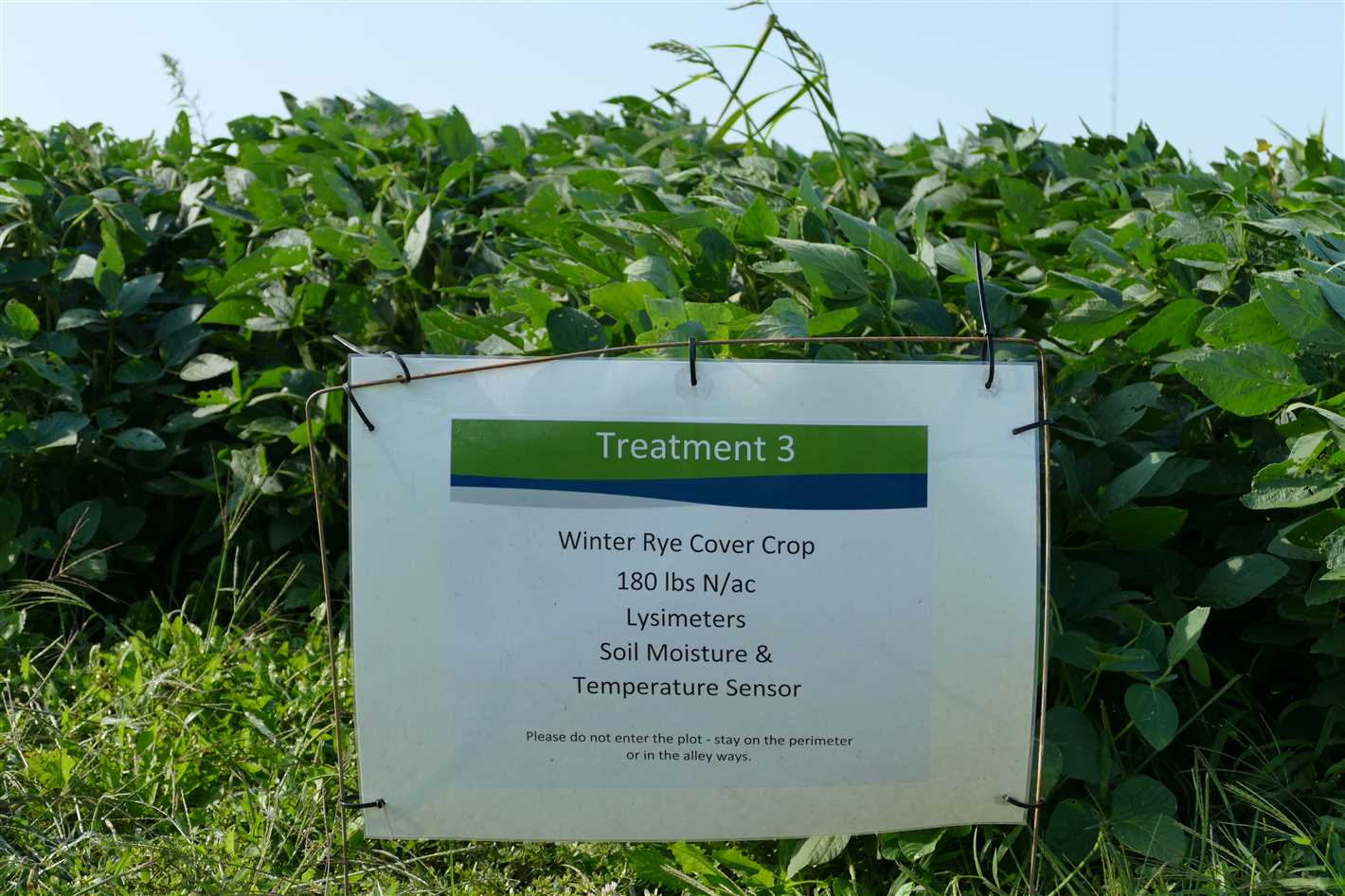
Check for any potential soil contamination, such as heavy metals or chemical residues. Contaminated soils can negatively affect the health of your crops and pose risks to human health. If contamination is present, consider remediation techniques or select a different area for cultivation.
9. Soil Organic Certification
If you are growing crops for organic certification, ensure that the soil you choose meets the organic standards. Organic certification requires the use of soil that has been managed without synthetic fertilizers, pesticides, or other prohibited substances for a specified period.
Choosing the right soil is essential for the successful growth of your crops. Consider these factors when selecting the soil type, and make any necessary amendments to create the best conditions for your plants to thrive.
Organic Fertilizers for Nitrate-Free Crop Growth
Growing crops without the use of nitrate-based fertilizers not only helps in reducing environmental pollution but also ensures the production of healthier and chemical-free crops. Organic fertilizers provide an excellent alternative to traditional fertilizers, as they are derived from natural sources and provide a range of nutrients that support plant growth.
1. Compost
Compost is a valuable organic fertilizer that can be made from kitchen scraps, yard waste, and other organic materials. It improves soil structure, promotes nutrient retention, and enhances microbial activity, all of which contribute to healthy, nitrate-free crop growth.
2. Manure
Animal manure, such as cow or chicken manure, is rich in nutrients and organic matter that can improve soil fertility. However, it should be properly composted before using it as a fertilizer to prevent potential risks of pathogens.
3. Bone Meal
Bone meal is made from ground-up animal bones and is an excellent source of phosphorus and calcium. It is commonly used as a fertilizer for root and fruit development and can be beneficial for nitrate-free crop growth.
4. Fish Emulsion
Fish emulsion is a liquid organic fertilizer made from fish waste. It is rich in nutrients like nitrogen, phosphorus, and potassium, making it an effective fertilizer for promoting healthy growth and development in crops.
5. Blood Meal
Blood meal is a dry and odorless fertilizer made from dried animal blood. It is a great source of nitrogen and can be used to supplement crops that require a boost in nitrogen levels.
6. Seaweed and Kelp
Seaweed and kelp contain a wide range of essential nutrients and minerals that can benefit plant growth. They are commonly used as a foliar spray or soil conditioner to improve nutrient uptake and enhance crop resistance to stress.
7. Green Manure
Green manure involves growing cover crops like clover, vetch, or legumes and then incorporating them into the soil. These cover crops help add organic matter, improve soil structure, and enhance nutrient availability for subsequent crops.
8. Compost Tea
Compost tea is a liquid fertilizer created by steeping compost in water. It contains a diverse array of beneficial microorganisms that can improve soil health and plant growth when applied as a foliar spray or soil drench.
9. Rock Phosphate
Rock phosphate is a natural mineral fertilizer that contains high levels of phosphorus, which is essential for promoting root development and overall plant growth. It is an excellent alternative to synthetic fertilizers often used in conventional farming practices.
By incorporating these organic fertilizers into your crop management practices, you can promote nitrate-free crop growth while also improving the long-term health and fertility of your soil. Remember to follow application guidelines and consider the specific nutrient needs of your crops to achieve optimal results.
Crop Rotation Techniques
Crop rotation is an essential technique in sustainable agriculture that involves the systematic planting of different crops in a specific order over several seasons. This practice helps improve soil health, manage pests and diseases, and increase crop yields. Here are some crop rotation techniques that can be used to enhance the growth of nitrate-free crops:
1. Legume Rotation
Include legume crops, such as peas, beans, and lentils, in your crop rotation plan. Legumes have the unique ability to fix atmospheric nitrogen through a symbiotic relationship with nitrogen-fixing bacteria in their roots. This helps increase the soil’s nitrogen content naturally, reducing the need for synthetic fertilizers.
2. Cover Crop Rotation
Integrate cover crops, like clover, rye, or vetch, into your crop rotation system. These crops not only protect the soil from erosion but also help suppress weeds and improve soil structure. Additionally, cover crops add organic matter to the soil when they are turned under or incorporated, acting as a natural source of nutrients for the following crops.
3. Complementary Crop Pairings
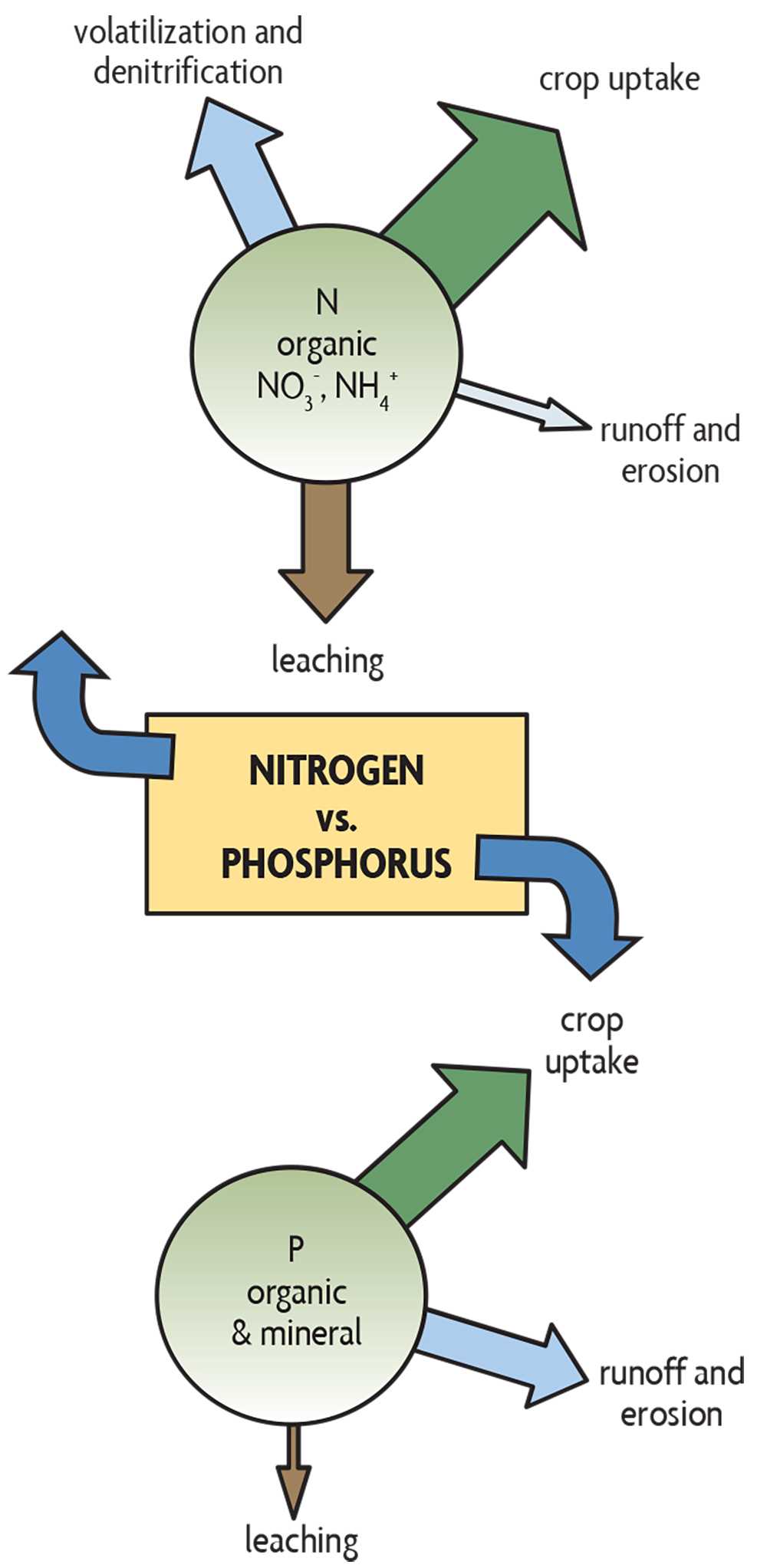
Select crops that have complementary nutrient needs and growth habits, and alternate them in your crop rotation schedule. This helps ensure that the soil’s nutrient resources are used efficiently, while also reducing the risk of pest and disease buildup associated with monoculture farming.
4. Crop Family Rotation
Rotate crops based on their plant families, as different plant families have varying nutrient requirements and are susceptible to specific pests and diseases. By rotating crops within different families, you can minimize the occurrence of these issues and maintain a healthy growing environment.
5. Intercropping
Practice intercropping, which involves planting different crops in close proximity within the same field. This technique provides several benefits, including improved pest management, increased yield potential, and enhanced nutrient cycling.
6. Green Manure Rotation
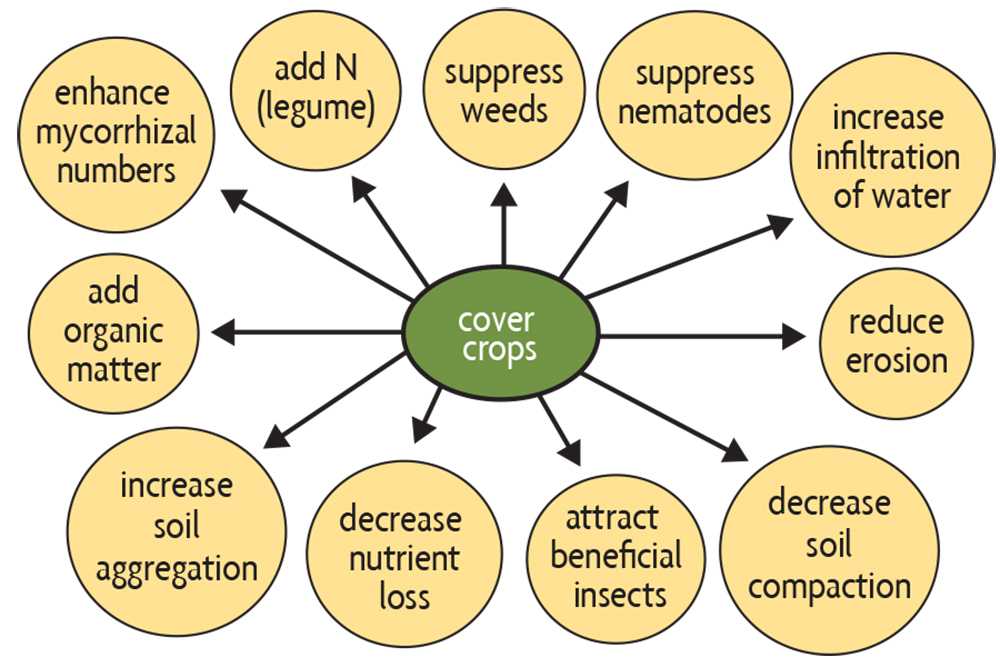
Incorporate green manure crops, such as mustard, millet, or buckwheat, into your crop rotation plan. Green manure crops are grown primarily to improve soil fertility. When these crops are turned under or incorporated into the soil, they release nutrients, increase organic matter content, and improve soil moisture retention.
7. Seasonal Rotation
Rotate crops based on seasonal considerations, such as planting cool-season crops in the fall and warm-season crops in the spring. This helps optimize crop growth and minimizes competition for nutrients and resources between different crop types.
8. Crop Residue Management
Properly manage crop residues after harvest to prevent the buildup of diseases and pests. Remove or incorporate crop residues into the soil to speed up decomposition and nutrient release, while also reducing the risk of disease carryover to the next crop.
9. Continuous Monitoring
Regularly monitor the health and performance of your crops throughout the growing season. Early detection of nutrient deficiencies, pest outbreaks, or disease symptoms allows for timely intervention and appropriate adjustments to the crop rotation plan.
By implementing these crop rotation techniques, farmers can improve soil fertility, reduce the dependency on synthetic fertilizers, and grow healthy, nitrate-free crops sustainably.
Managing Water and Irrigation
Proper water management and irrigation techniques are crucial for successful and nitrate-free crop growth. Here are some expert recommendations to help you optimize water usage and irrigation practices:
1. Monitor Soil Moisture
Regularly measure the soil moisture level to determine when irrigation is necessary. Use moisture sensors or manual methods like the finger test to check soil moisture content.
2. Use Drip Irrigation
Drip irrigation systems deliver water directly to plant roots, reducing evaporation and water runoff. This method ensures targeted watering, promoting efficient nutrient absorption while minimizing water waste.
3. Implement Mulching
Mulching is a technique that involves covering the soil surface with a layer of organic material like straw or wood chips. This helps retain moisture, reduce evaporation, and regulate soil temperature.
4. Practice Irrigation Scheduling
Develop an irrigation schedule based on plant water requirements, climate conditions, and soil type. Avoid overwatering, as it can lead to nutrient leaching and water stagnation, negatively affecting crop health.
5. Consider Rainwater Harvesting
Collect and store rainwater to supplement irrigation needs. Rainwater is free from chlorine and other chemicals and can help reduce dependence on municipal water sources.
6. Avoid Overhead Sprinklers
Avoid using overhead sprinklers, as they can cause water waste due to evaporation and wind drift. Instead, opt for targeted irrigation methods like drip irrigation or soaker hoses.
7. Manage Irrigation Timing
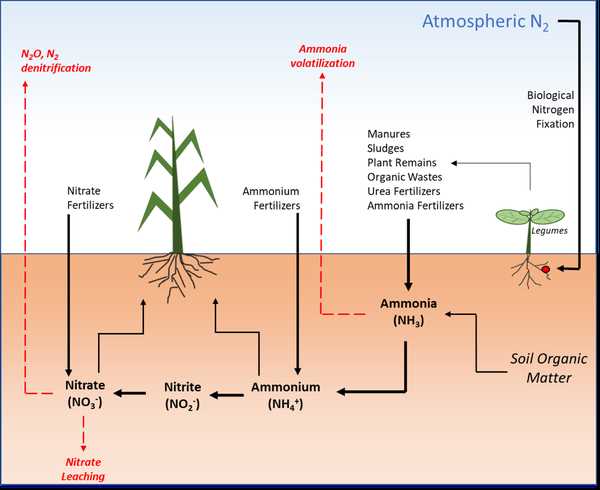
Avoid irrigating during the hottest part of the day, as water can evaporate quickly. Water in the early morning or late afternoon to ensure minimal water loss and optimal nutrient absorption.
8. Utilize Sensor Technology
Consider using advanced sensor technology to monitor soil moisture, weather conditions, and plant water stress levels. This data can help optimize irrigation decisions and prevent under or overwatering.
9. Regularly Inspect Irrigation System
Periodically check and maintain your irrigation system to ensure proper functionality. Fix any leaks, clogs, or damaged components promptly to avoid water wastage and ensure consistent water delivery to crops.
By implementing these water management and irrigation strategies, you can optimize water usage, conserve resources, and achieve healthy, nitrate-free crop growth.
Natural Pest Control Methods
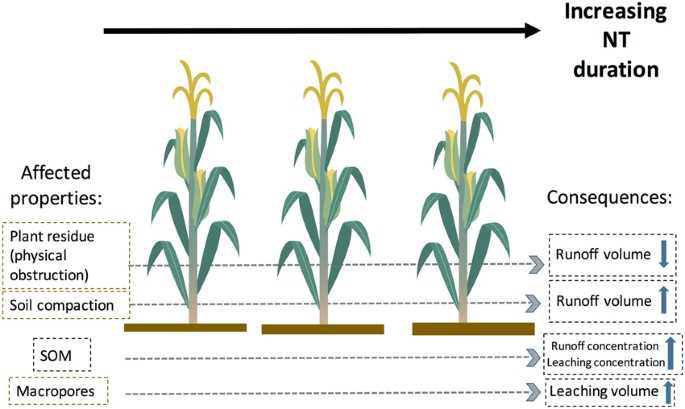
1. Companion Planting
One effective method of natural pest control is companion planting. By strategically planting different crops together, you can create a natural barrier against pests. For example, planting marigolds near tomatoes can help repel pests like aphids and nematodes.
2. Crop Rotation
Another way to control pests naturally is through crop rotation. By changing the location of your crops each year, you disrupt pest life cycles and reduce the risk of infestation. This method helps to prevent the buildup of pests in the soil.
3. Biological Control
Biological control involves using natural enemies of pests to control their population. This can be done by introducing beneficial insects like ladybugs or parasitic wasps to your garden. These helpful insects prey on pest insects, helping to keep their populations in check.
4. Organic Pesticides
Using organic pesticides made from natural ingredients is another option for natural pest control. These pesticides are usually less harmful to the environment and can be used to target specific pests, while minimizing harm to beneficial insects.
5. Row Covers
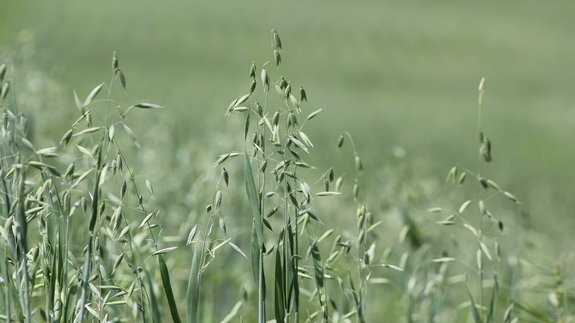
Row covers are a physical barrier placed over plants to protect them from pests. These covers can be made from lightweight fabric or plastic and are especially effective in preventing insect infestations. Row covers allow sunlight, air, and water to reach the plants while keeping pests out.
6. Trap Crops
Trap crops are plants that are specifically grown to attract and distract pests away from your main crops. For example, planting mustard greens can attract aphids, keeping them away from your prized vegetables. This method helps to protect your crops while sacrificing the trap crop to the pests.
7. Handpicking and Deterring
For small-scale pest control, handpicking pests off plants can be effective. It’s important to regularly inspect your plants for pests and remove them by hand. Additionally, deterring pests by using deterrent plants like garlic, onions, or herbs can help keep pests away from your garden.
8. Beneficial Nematodes
Beneficial nematodes are microscopic worms that can be used to control pests in the soil. These nematodes attack and kill pests such as grubs and larvae, reducing their populations naturally. They can be applied to the soil using a sprayer or watering can.
9. Integrated Pest Management
Integrated Pest Management (IPM) is a comprehensive approach to pest control that combines multiple strategies. It involves monitoring pests, setting action thresholds, and implementing a combination of cultural, biological, and chemical control methods as necessary.
| Method | Description |
|---|---|
| Companion Planting | Strategically planting different crops together to create a natural barrier against pests |
| Crop Rotation | Changing the location of crops each year to disrupt pest life cycles |
| Biological Control | Using natural enemies of pests to control their population |
| Organic Pesticides | Using pesticides made from natural ingredients |
| Row Covers | Physical barrier placed over plants to protect them from pests |
| Trap Crops | Growing plants to attract and distract pests away from main crops |
| Handpicking and Deterring | Removing pests by hand and using deterrent plants |
| Beneficial Nematodes | Using microscopic worms to control pests in the soil |
| Integrated Pest Management | Using a combination of strategies for comprehensive pest control |
“Question-Answer”
What are nitrates and why is it necessary to have nitrate-free crops?
Nitrates are chemical compounds that contain nitrogen and oxygen. While nitrates are essential for plant growth, excessive amounts can be harmful to human health. Having nitrate-free crops is important to ensure food safety and prevent health risks associated with high nitrate consumption.
How can farmers reduce the use of nitrates in crop production?
Farmers can reduce the use of nitrates in crop production by implementing various practices such as using organic fertilizers, crop rotation, cover cropping, and precision farming techniques. These methods help enhance soil fertility and reduce the need for synthetic nitrogen fertilizers.
Are there any nitrate-free fertilizers available in the market?
Yes, there are nitrate-free fertilizers available in the market. These fertilizers are usually made from organic sources such as compost, manure, or bone meal. They provide essential nutrients to plants without the risks associated with nitrates.
Can nitrate-free crops be grown in all types of soil?
Nitrate-free crops can be grown in a variety of soil types. However, the nutrient content and soil fertility may vary, so it is important for farmers to conduct soil tests and amend the soil accordingly to ensure optimal plant growth.
What are some potential benefits of growing nitrate-free crops?
Growing nitrate-free crops can have several benefits. Firstly, it helps in reducing the risk of nitrate poisoning in humans. Secondly, it promotes sustainable agriculture practices by minimizing the use of synthetic fertilizers. Lastly, it improves food quality and nutrition by ensuring crops are free from excessive nitrates.
What are the potential challenges farmers may face in achieving nitrate-free crop growth?
Farmers may face several challenges in achieving nitrate-free crop growth. These include the availability and cost of organic fertilizers, the need for additional labor and resources for implementing sustainable farming practices, and the potential decrease in crop yields during the transition period. However, with proper planning and implementation, these challenges can be overcome.







